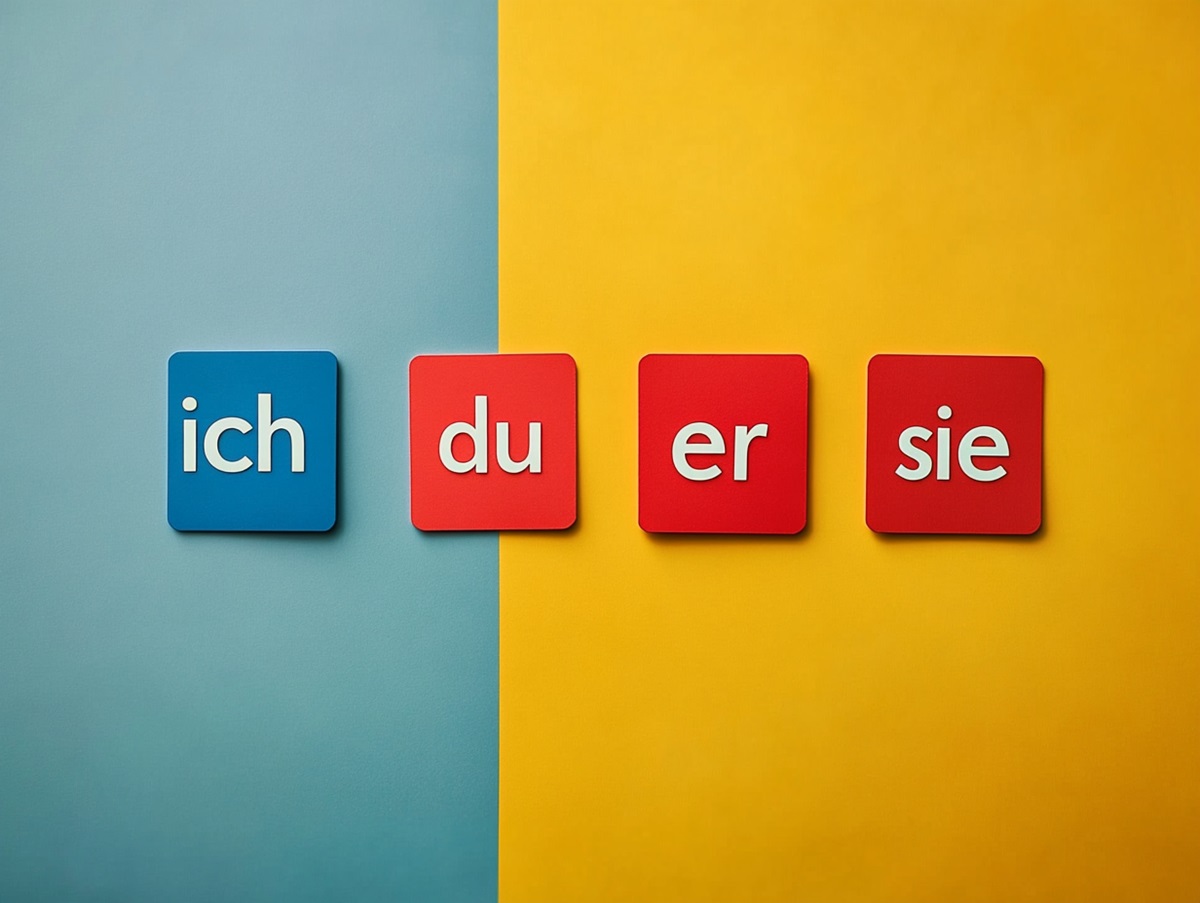
Learning German is like solving a linguistic puzzle, and pronouns are key pieces that bring it all together. German pronouns might seem daunting at first, but with a pinch of humor and some helpful tips, you’ll get them right in no time! Whether you greet someone cheerfully with Hallo! or try to figure out who sie refers to, this guide is here to help.
What Are Pronouns?
Simply put, pronouns are words we use to refer to people, places, or things without using their actual names. For example, in English, we use he, she, it, or they. German pronouns work similarly but have their own set of rules and quirks, especially when it comes to cases, gender, and number.
Basic German Pronouns
Alright, let’s break it down into simple, manageable steps. Here’s a table of German pronouns for each case:
Nominative Case: The Subject
These are used for the doer of the action.
| English | German |
|---|---|
| I | ich |
| You (informal) | du |
| He | er |
| She | sie |
| It | es |
| We | wir |
| You (plural informal) | ihr |
| You (formal) | Sie |
| They | sie |
Notice anything? German has two forms of you (du and Sie) and one form (sie) that can mean both she and they. Context is key!
Accusative Case: The Direct Object
The accusative case is used when someone or something is receiving the action.
| English | German |
|---|---|
| Me | mich |
| You (informal) | dich |
| Him | ihn |
| Her | sie |
| It | es |
| Us | uns |
| You (plural informal) | euch |
| You (formal) | Sie |
| Them | sie |
Examples:
- Ich sehe dich. – I see you.
- Er liebt sie. – He loves her.
Dative Case: The Indirect Object
If something is given to or done for someone, the dative case is used.
| English | German |
|---|---|
| Me | mir |
| You (informal) | dir |
| Him | ihm |
| Her | ihr |
| It | ihm |
| Us | uns |
| You (plural informal) | euch |
| You (formal) | Ihnen |
| Them | ihnen |
Examples:
- Er gibt mir das Buch. – He gives me the book.
- Wir zeigen ihnen den Weg. – We show them the way.
Gender Matters (But Not Always)
One unique feature of German is that every noun has a gender: masculine, feminine, or neuter. Pronouns reflect this gender, which is why he, she, and it translate to er, sie, and es.
- Wo ist der Hund? Er ist draußen. – Where is the dog? He is outside.
- Wo ist die Katze? Sie ist drinnen. – Where is the cat? She is inside.
This can be a little tricky because grammatical gender doesn’t always align with natural gender. For example:
- Das Mädchen (the girl) is neuter, so you’d say es.
Formal vs. Informal: A Key Distinction
In German, politeness is built into the language.
- Use du with friends, family, and people you know well.
- Use Sie with strangers, in professional settings, or when addressing someone older.
Hint: When in doubt, it’s always safe to start with Sie.
Fun Practice Tips
- Pronoun Karaoke: Practice using German pronouns by singing along with songs in German. Replace the lyrics with German pronouns for a fun challenge!
- Label Everything: Write pronouns on sticky notes and place them on objects around your house.
- Play a Game: Turn conversations into a guessing game. When someone says sie, ask, “Welche sie meinst du?” (Which sie do you mean?)
Wrapping It Up
Mastering pronouns is key to having better conversations in German. There is some memorization involved, but with practice, it becomes second nature. Start with the basics and use them in context. Don’t be afraid of making mistakes—they’re all part of the learning process!
Before you know it, you’ll be confidently saying things like Ich liebe dich (I love you) and Gib mir das Buch (Give me the book). Now, go forth and conquer those pronouns!
Viel Erfolg! (Good luck!)



